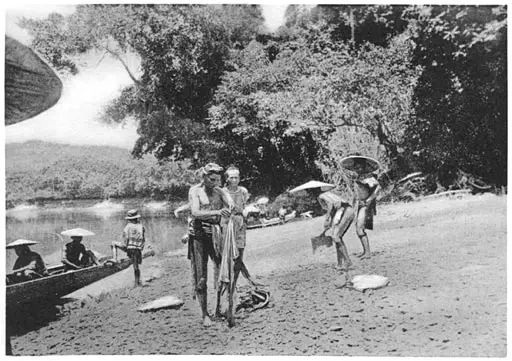Nothing sums up ‘fusion food’ better than yōshoku.
Yōshoku is a Western-influenced cooking style of Japanese food. Most of these dishes originated during the Meiji Restoration era (1868 to 1912) when the Meiji Emperor opened its border to foreign ideas and trading.
During that time, the Emperor lifted the ban on red meat and promoted Western cuisine. The Japanese believed that Western food was the cause of the Westerners’ larger physique.
The first recorded of the term yōshoku can be traced back to 1872. The name of these dishes are mostly inspired by its original Western version.
So here are interesting origin stories behind eight yōshoku dishes you should know about:
1.Japanese curry rice

How curry powder was introduced to Japan all the way from India, is all thanks to the British.
During the Meiji era, the Indian subcontinent was under British colonial rule.
Legend has it that in the late 1800s, a shipwrecked British sailor was picked up by a fishing boat.
The lone sailor was carrying curry and introduced it to the Japanese after being rescued.
While the story of the lone sailor is most probably a myth, it is indeed true that the British navy brought curry powder over to Japan from India.
Japanese restaurants then started to serve curry as early as 1877. It was not until the Japanese started to feed their army and navy with it in the early 20th century that the dish gained its popularity.
Apart from the curry sauce, other ingredients include onions, carrots, potatoes, and a choice of meat such as beef, pork and chicken.
2.Nikujaga
Here is another yōshoku dish with a military origin story.
Togo Heihachiro was one of the Japan’s greatest naval heroes. When he studied in Portsmouth, England from 1870 to 1878, he really loved the beef stew there.
After he returned to Japan, he allegedly instructed the chefs of the Imperial Japanese Navy to recreate the dish and Nikujaga was born.
The dish is made from meat (beef in western Japan and pork in eastern Japan), potatoes, onion stewed in sweetened soy sauce and mirin.
It is often served with a bowl of white rice and miso soup.
3.Omurice

Just like many yōshoku dishes, there is no exact origin story behind omurice.
The dish allegedly came around in 1900 at a famous Western-style restaurant in Ginza, Tokyo, called Renga-tei.
The idea behind it was to create a dish that could be easily eaten with one hand while working in a busy kitchen.
Omurice is considered a Western dish because of the omelette.
The dish typically consists of fried rice wrapped in a thin omelette. For Malaysians, it is basically another version of Nasi Goreng Pattaya.
4.Hambagu
Also known as hamburg, this yōshoku is made from ground meat with finely chopped onion, egg and breadcrumbs flavoured with various spices.
It is believed the dish was first served in Yokohama, which was one of the first ports opened to foreigners during Meiji era.
Then during the 1960s, the dish became popular when magazines regularly printed the recipe.
Not to be confused with American hamburger, hambagu is basically a hamburg steak which was made popular by migrating Germans. The dish gained its popularity at the beginning of the 19th century.
5.Napolitan
If you want to have pasta but you don’t have any pasta sauce, try to make pasta sauce instead.
This yōshoku is typically made of spaghetti, tomato ketchup, onion, button mushrooms, green peppers, sausage and bacon.
Legend has it that the general chef of the New Grand Hotel (Hotel New Grand) in Yokohama was inspired by one of the military rations of the American forces during World War II.
At that time, tomato paste was rare so he used ketchup as a substitute.
He named it Napolitan or Naporitan after Naples, Italy.
6.Doria
If you are not familiar with gratin, it is a culinary technique where the main ingredient is topped with a browned crust, often with breadcrumbs, grated cheese, egg or butter.
It has a golden crust on top after being baked or cooked under an overhead grill or broiler.
The most common example of this style of cooking is potatoes au gratin, funeral potatoes or potato bakes.
Instead of the potato, the Japanese used their local staple – rice – as a base, creating a casserole dish called doria.
It is believed that a Swiss chef at New Grand Hotel in Yokohama named Saly Weil developed the dish in the 1930s.
He was inspired by the classic French gratins as well as baked Italian casseroles.
While Western gratins often used beef or ham, doria’s common ingredient is seafood.
To make doria, the rice must be cooked and buttered. Then add in other ingredients such as seafood, chicken and vegetables.
Fold in a classic French bechamel sauce which is made of butter, flour and milk.
Pour the mixture into a baking dish and topped with cheese such as Parmesan. Finally, bake it until the cheese is nice and golden in colour.
7.Korokke
Here is another yōshoku which inspired by French cuisine. Korokke is basically the Japanese version of French croquette.
It is made by mixing cooked chopped meat, seafood, vegetables with mashed potato or white sauce.
Shape the mixture into a flat patty, then roll it in flour, eggs and breadcrumbs. Lastly, fry it until brown on the outside.
The French reportedly introduced croquette to Japan some time in 1887. The earliest mentions of the dish is something called a ‘kuroketto’ which appear in recipe books from the Meiji era.
When korokke was first introduced to Japan, it was considered an expensive dish which only available at high-end restaurant.
Then came in a chef-turned-butcher named Seiroku Abe in the aftermath of the Great Kanto Earthquake of 1923.
According to Japan Times, Abe came up with the idea of using leftover meat scraps by grinding them and mixing the meat with potato. He also used lard (which was cheaper) back then to fry it. Since then, korokke became a common dish at Japanese butcher shops.
Today, the dish is a common dish that can be found in supermarket and convenience store.
8.Hayashi rice
The history of this yōshoku can be traced back to the 19th century Ikuno, a former mining town in Hyogo Prefecture.
Legend has it that a French engineer who worked for the mine back in 1868 improved the dish.
Hayashi rice mainly contains beef, onions and button mushrooms.
The western influence of this dish is the use of red wine and tomato sauce in its demi-glace sauce.
This sauce is served atop or alongside steamed rice.
There are several theories on how the name ‘Hayashi’ came about. Some believed that it was named after Yuteki Hayashi, the first president of published company Maruzen. Other believed that it was named after a cook named Hayashi who often served this dish for staff meals.
However, the most common understanding is that it derived from the phrase ‘hashed beef’.
The best thing thing about this dish is that you can keep your hayashi stew in the fridge for a few days. Or else try using it for other meals such as Omurice.
































